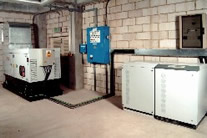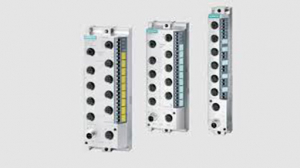FEARS OVER FUTURE POWER SHORTAGES HIGHLIGHTS REQUIREMENT FOR STANDBY POWER AND CHP
1st March 2010
Source:
Shenton Group

Britain is facing a future where energy prices are going to escalate and energy sources will become insecure and unreliable according to a recent report from the industry regulator Ofgem. It stated that a combination of a global financial crisis, tough environmental targets, increasing gas import dependency and the closure of ageing power stations are to blame for rising costs and uncertain supplies.
There is little doubt that Britain faces a harsh future of power blackouts and massive economic disruption unless urgent action is taken to head off a looming energy supply crunch. It is already predicted that the Government will almost certainly fail to meet its renewable energy targets and even if the UK does cut its energy demand in half by 2050 through efficiency improvements, the country will still need 16 new power plants between now and 2030 and an additional four by 2050.
Even now, despite reassurances from the National Grid that it is capable of meeting demand, recent events indicate this is no longer the case. Power cuts used to be perceived as a winter problem caused by high winds, snow and thunderstorms bringing down power lines. Now there are daily reports in local and national newspapers on how major power cuts are affecting local communities.
The prospect of blackouts affecting, in particular, sophisticated IT and telephone systems, has put pressure on business and energy managers to implement an effective and robust strategy to ensure their business can continue to function when power cuts occur. The potential catastrophe caused by a power cut to a company’s ability to function has resulted in a need for standby power. Nowadays, it is not only large companies that need standby power systems, SMEs including care homes, shops, business premises and filling stations all need to be prepared for the inevitable power cut.
Here are a few important facts and figures about power outages:
· Power Failure is responsible for 28% of computer system breakdowns
· Over one third of companies take more than a day to recover from the disruption caused by a power failure. 10% take more than a week
· Because of a power failure, 33% of companies lose between £10 000 and £250 000, 20% lose between £250000 and £1 million, 15% lose over £1 million
· Out of 450 leading companies surveyed, each suffered an average of 9 computer failures each year. (Source: Find FVP/Fortune 1000 companies)
· Following a power failure it can take up to 48 hours to reconfigure a network system.
· It can take days, weeks or even months to re-input lost data. Sometimes data is lost forever, for instance in CAD or graphics applications where original work can never be recreated
· 90% of all companies that experience a computer disaster and don't have a survival plan go out of business within 18 months (Source: Price Waterhouse)
Most companies understand the need for power management systems and many have installed UPS (Uninterruptible Power Supply) systems believing that a UPS will solve the problem of power cuts. However as the problems with the country’s energy supply continue to multiply, power cuts are no longer lasting minutes but often hours and days at a time.
Typically, a UPS has just a 10-20 minute battery life. Therefore many companies realise that a UPS alone is insufficient to enable them to keep their business running if a power cut last longer than a few minutes. With more frequent and longer lasting power cuts occurring many companies realise that they need to support their UPS with a generator.
Standby Power Combined With UPS
Standby generators provide additional backup to a conventional UPS. Installed as part of a SPS (standby power system) the generator takes over before the batteries of the UPS run out, smoothly transferring the network over as part of the SPS. When mains power returns, the generator will automatically switch back to conventional power after it has ensured that the power will remain constant.
Auto Mains Failure
When the mains supply fails, or goes out of acceptable limits, the AMF panel disconnects the faulty mains supply, starts the Generator and connects it to the load. On mains return, the AMF will transfer the load back to the mains and shut down the Generator.
Combined Heat and Power
Combined heat and power (CHP), is an excellent solution for controlling energy costs whilst improving the reliability of power and thermal energy supplies. CHP is the cogeneration of heat and electricity, in which the spare heat produced, is turned into hot water. The principle is that a natural gas or biogas-fuelled engine drives a generator that produces electricity. The heat from the engine and exhaust, which would normally be wasted, is absorbed by coolant water through a specially developed high efficiency heat exchanger. This energy, stored as hot water, is then usable directly for central heating, hot water, or indirectly for air conditioning. As a rule of thumb, the production of 1 kilowatt of electrical power creates 2 kilowatts of usable heat energy.
CHP systems also provide a local power source capable of keeping critical facilities operating during power outages. When power outages occur resulting in a black out, CHP plants can be ‘islanded’ from the grid and will continue to operate normally. Because they rely on natural gas, CHP plants offer an excellent solution to ensure power continuity in critical infrastructures such as hospitals, schools, airports, military bases and government facilities. In addition CHP plants can improve the power quality during brownouts when computers and other sensitive equipment are affected by deviations in power quality.
Emergency Callout Generator Service
A contract with an emergency callout generator company negates the need for large capital expenditure and ongoing maintenance costs. Instead a company provides a standby generator on an emergency callout basis.
Emergency generator call out companies are capable of supporting any site that has either single or 3-phase mains electrical supply. Companies providing this service have a 24/7-control room, which arranges for a standby generator to be despatched from a local depot when a call is received from a subscriber. Service levels are based on a target delivery time of 1 hour and a guaranteed commitment to a maximum of three hours
Our electricity comes from a mix of power stations comprising of mostly gas but also coal-fired and nuclear. During the next six years, 40 percent of this ageing fleet will have to be shut down due to environmental targets, safety or because they have become obsolete. As talks are still continuing between the Government and energy providers as to where and when replacement power stations will be built, the problems of having an antiquated power system will manifest in more frequent and longer power cuts. Businesses can no longer afford to drag their feet on putting in a robust power support system, they must act now to avoid power cuts having a derogatory affect on their livelihoods
Even now, despite reassurances from the National Grid that it is capable of meeting demand, recent events indicate this is no longer the case. Power cuts used to be perceived as a winter problem caused by high winds, snow and thunderstorms bringing down power lines. Now there are daily reports in local and national newspapers on how major power cuts are affecting local communities.
The prospect of blackouts affecting, in particular, sophisticated IT and telephone systems, has put pressure on business and energy managers to implement an effective and robust strategy to ensure their business can continue to function when power cuts occur. The potential catastrophe caused by a power cut to a company’s ability to function has resulted in a need for standby power. Nowadays, it is not only large companies that need standby power systems, SMEs including care homes, shops, business premises and filling stations all need to be prepared for the inevitable power cut.
Here are a few important facts and figures about power outages:
· Power Failure is responsible for 28% of computer system breakdowns
· Over one third of companies take more than a day to recover from the disruption caused by a power failure. 10% take more than a week
· Because of a power failure, 33% of companies lose between £10 000 and £250 000, 20% lose between £250000 and £1 million, 15% lose over £1 million
· Out of 450 leading companies surveyed, each suffered an average of 9 computer failures each year. (Source: Find FVP/Fortune 1000 companies)
· Following a power failure it can take up to 48 hours to reconfigure a network system.
· It can take days, weeks or even months to re-input lost data. Sometimes data is lost forever, for instance in CAD or graphics applications where original work can never be recreated
· 90% of all companies that experience a computer disaster and don't have a survival plan go out of business within 18 months (Source: Price Waterhouse)
Most companies understand the need for power management systems and many have installed UPS (Uninterruptible Power Supply) systems believing that a UPS will solve the problem of power cuts. However as the problems with the country’s energy supply continue to multiply, power cuts are no longer lasting minutes but often hours and days at a time.
Typically, a UPS has just a 10-20 minute battery life. Therefore many companies realise that a UPS alone is insufficient to enable them to keep their business running if a power cut last longer than a few minutes. With more frequent and longer lasting power cuts occurring many companies realise that they need to support their UPS with a generator.
Standby Power Combined With UPS
Standby generators provide additional backup to a conventional UPS. Installed as part of a SPS (standby power system) the generator takes over before the batteries of the UPS run out, smoothly transferring the network over as part of the SPS. When mains power returns, the generator will automatically switch back to conventional power after it has ensured that the power will remain constant.
Auto Mains Failure
When the mains supply fails, or goes out of acceptable limits, the AMF panel disconnects the faulty mains supply, starts the Generator and connects it to the load. On mains return, the AMF will transfer the load back to the mains and shut down the Generator.
Combined Heat and Power
Combined heat and power (CHP), is an excellent solution for controlling energy costs whilst improving the reliability of power and thermal energy supplies. CHP is the cogeneration of heat and electricity, in which the spare heat produced, is turned into hot water. The principle is that a natural gas or biogas-fuelled engine drives a generator that produces electricity. The heat from the engine and exhaust, which would normally be wasted, is absorbed by coolant water through a specially developed high efficiency heat exchanger. This energy, stored as hot water, is then usable directly for central heating, hot water, or indirectly for air conditioning. As a rule of thumb, the production of 1 kilowatt of electrical power creates 2 kilowatts of usable heat energy.
CHP systems also provide a local power source capable of keeping critical facilities operating during power outages. When power outages occur resulting in a black out, CHP plants can be ‘islanded’ from the grid and will continue to operate normally. Because they rely on natural gas, CHP plants offer an excellent solution to ensure power continuity in critical infrastructures such as hospitals, schools, airports, military bases and government facilities. In addition CHP plants can improve the power quality during brownouts when computers and other sensitive equipment are affected by deviations in power quality.
Emergency Callout Generator Service
A contract with an emergency callout generator company negates the need for large capital expenditure and ongoing maintenance costs. Instead a company provides a standby generator on an emergency callout basis.
Emergency generator call out companies are capable of supporting any site that has either single or 3-phase mains electrical supply. Companies providing this service have a 24/7-control room, which arranges for a standby generator to be despatched from a local depot when a call is received from a subscriber. Service levels are based on a target delivery time of 1 hour and a guaranteed commitment to a maximum of three hours
Our electricity comes from a mix of power stations comprising of mostly gas but also coal-fired and nuclear. During the next six years, 40 percent of this ageing fleet will have to be shut down due to environmental targets, safety or because they have become obsolete. As talks are still continuing between the Government and energy providers as to where and when replacement power stations will be built, the problems of having an antiquated power system will manifest in more frequent and longer power cuts. Businesses can no longer afford to drag their feet on putting in a robust power support system, they must act now to avoid power cuts having a derogatory affect on their livelihoods
Similar articles
More from Shenton Group
- Bank of Cyprus UK Contract's with shentongroup’s Powercall Service 12th March 2013
- shentongroup Generates Power For Temporary Hotel Accomodation At Silverstone 30th July 2012
- shentongroup Appointed Exclusive UK Distributor for Allmand Bros, Inc 3rd May 2012
- shentongroup SUPPLIES GENERATOR SYSTEM TO HERRCO COSMETICS FOR PEAK LOAD MANAGEMENT 17th January 2012












Write a comment
No comments